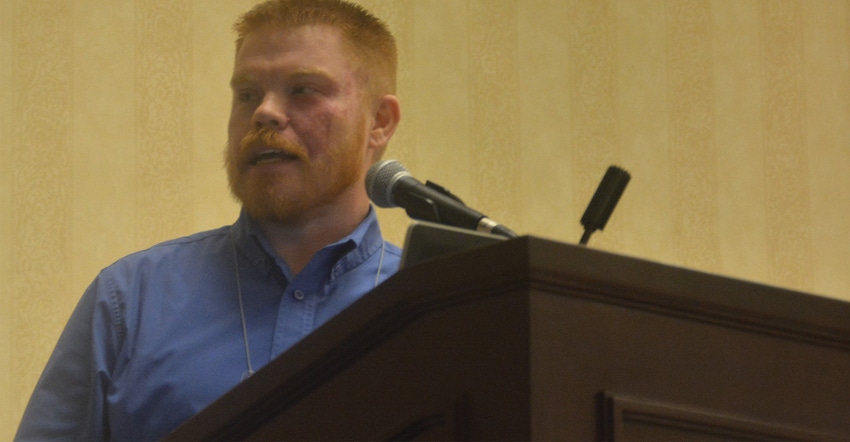
Orrin Feril, Big Bend Groundwater Management District 5 manager, was blunt about the district’s water rights fight with Quivira National Wildlife Refuge when he gave his status report to more than 500 people attending the 2019 Governor’s Conference on the Future of Water in Kansas, held Nov. 7-8 in Wichita.
“By academic credentials, I am a research scientist,” he said. “And I have attempted to approach this issue like a scientist. I have contacted experts in the field to give us data upon which to make decisions. In 2010, we commissioned a high-resolution hydrology model for the district, complete with multi-layered hydrological modeling of the region. That study tells us that the remedy we proposed in 2016 and 2017 absolutely would work and in my opinion, the only reason it was declined is that we didn’t have the people in the room we needed to make the decision.”
Feril said the proposed administration of junior rights would not only hurt irrigated agriculture, with cuts of up to 55% of authorized allocation and about 30% of historic use for irrigation, but would also impact municipalities, schools, hospitals and other businesses.
“Administration would hurt everybody,” he said. “It isn’t just the economic impact to agriculture. It’s the economic and life-quality impact on all of the people.”
He said the district is now in the process of getting engineering studies done to decide how a well field could be laid out to pump into Rattlesnake Creek at critical times. He said a hydrological analysis shows that augmentation could restore 99% of Quivira’s needed supply while also providing the refuge a consistent water quality.
Feril said the district’s water users have already taken substantial steps to conserve water and will do more, including removing end guns from all center pivots, utilizing technology and retiring some water rights in critical areas.
He added that the district has dropped its appeal to the secretary of agriculture for a ruling on its proposed LEMA and will work with the U.S. Fish and Wildlife Service to get approval of the augmentation and conservation plan as a solution to the impairment.
About the Author(s)
You May Also Like






